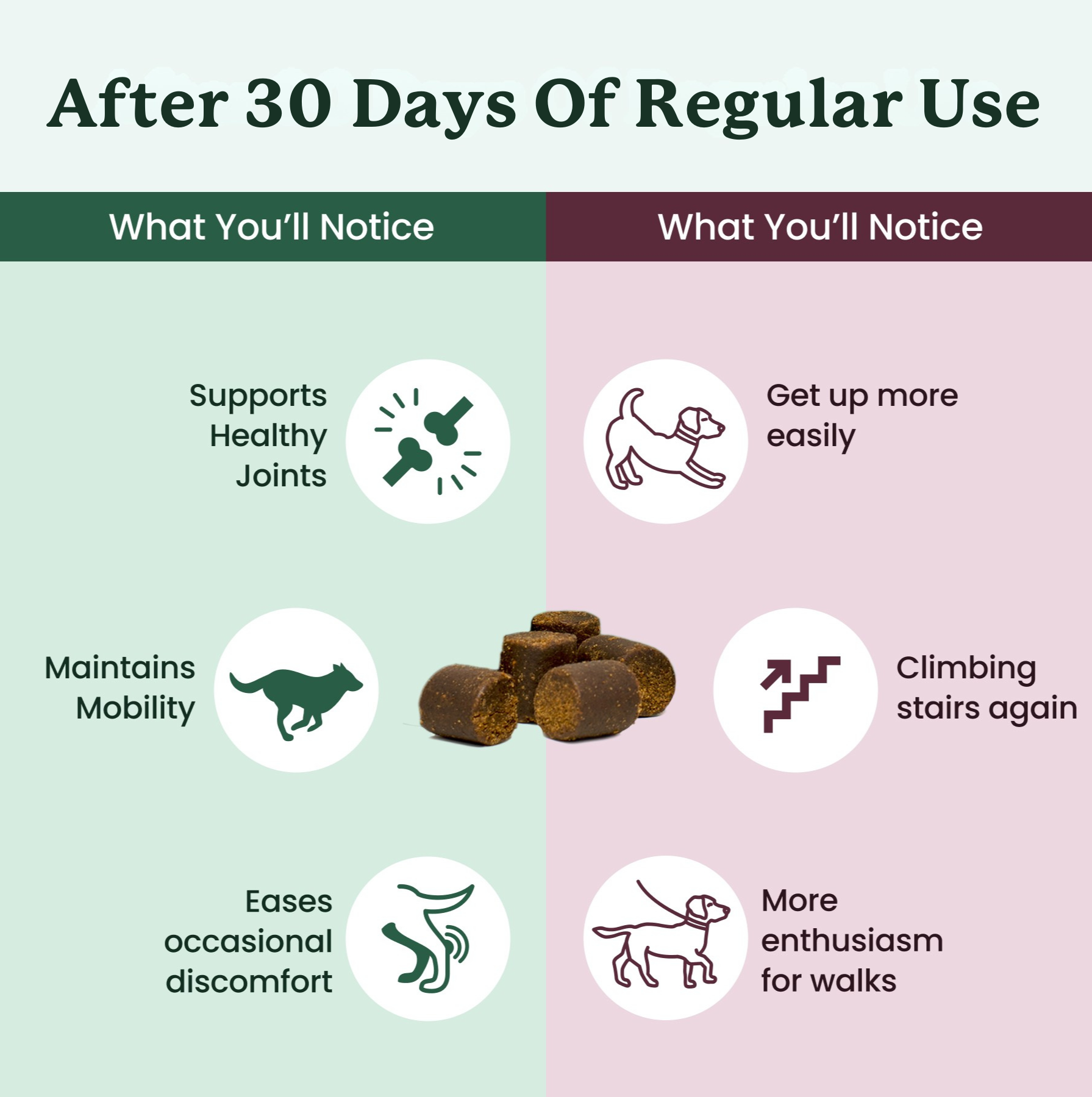A dog's posture shouldn't change suddenly, and they should generally keep natural alignment when sitting, standing, and lying down. If you're here because you suspect there a hip and joint issue causing your dog's posture to change, the information below should help.
What is Proper Dog Posture?
Proper posture in dogs refers to the natural alignment of their body when standing, sitting, or lying down. A healthy dog typically has a straight back, evenly distributed weight on all four legs, and a relaxed tail position. Their movements should be fluid, without stiffness or awkwardness.
Good posture is a sign of physical health and well-being, reflecting strong muscles, healthy joints, and a pain-free state. Any deviations from this standard may indicate underlying issues requiring attention.
Does a Dog's Posture Change Naturally?
Yes, a dog's posture can change naturally over time due to factors such as age, weight gain, or shifts in activity levels. Puppies often have slightly awkward gaits as they grow, while senior dogs may develop a hunched back or stiffness as part of the aging process.
While some changes are harmless and part of a dog's natural life stages, it's essential to monitor these changes closely. A significant or sudden alteration in posture, especially without an apparent reason, may signal a health concern that warrants further investigation.
What Posture Changes are Signs of Pain in Dogs?
Posture changes that may indicate pain include arching or hunching the back, holding the head lower than usual, or shifting weight away from a specific limb. A dog may also sit or lie down awkwardly, avoid certain movements, or adopt a "praying" position, with their front legs stretched forward and chest close to the ground.
These changes often accompany other signs of discomfort, such as whimpering, reduced activity, or loss of appetite. Identifying these signs early is crucial in addressing the root cause and alleviating your dog's discomfort effectively.
When to See a Veterinarian
If you notice consistent or worsening posture changes, it’s important to consult a veterinarian. Immediate attention is required if these changes are paired with symptoms like persistent limping, visible swelling, or signs of severe pain, such as yelping or aggression when touched.
Your veterinarian will assess your dog’s posture, mobility, and overall health to determine the cause. Early intervention can help prevent further complications, especially if the issue involves joint problems, nerve damage, or internal injuries.
Conclusion
Posture changes in dogs can provide valuable insights into their health and comfort. While some variations are part of natural development, sudden or persistent changes may signal underlying pain or medical conditions. Understanding what constitutes proper posture and recognizing deviations ensures you can address potential issues promptly.
By staying attentive to your dog’s body language and consulting your veterinarian when needed, you can help maintain their quality of life and overall well-being.
Posture Changes in Dogs: Frequently Asked Questions
What causes sudden posture changes in dogs?
Sudden posture changes may be caused by pain, injury, joint problems, muscle strain, neurological issues, or internal illness. A veterinary exam is recommended if it happens abruptly.
Can posture changes indicate hip or joint problems?
Yes. Dogs with hip dysplasia, arthritis, or joint degeneration may shift weight, hunch their back, or avoid certain movements due to discomfort.
Are posture changes normal as dogs age?
Some age-related stiffness or minor posture shifts are normal, but persistent hunching, limping, or awkward sitting positions may signal a medical issue.
How do I know if my dog’s posture change is from pain?
Posture changes caused by pain often occur alongside reduced activity, whining, difficulty standing, or avoidance of movement. A vet visit is advised.
When should I take my dog to the vet for posture issues?
You should seek veterinary care if posture changes are sudden, recurring, worsening, or paired with limping, swelling, weakness, or behavioral changes.











